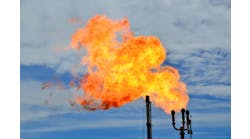[pullquote]
The engineering firm hired to tackle the process hazard assessment project list was convinced our methanol/water tower required a relief valve. I wasn’t — because an unimpeded vent line ran from the shell of the condenser to its receiver and then to the thermal oxidizer inlet drum. So, we checked the fire case flow against the choked flow for this vent pipe. Sure enough, the vent line had been sized for sufficient flow to continuously vent the column and the condenser. Some might argue a relief valve could provide cost savings by preventing the loss of methanol. However, keeping records and doing maintenance on equipment incurs costs. A vent line is a one-and-done solution.
The vent line exemplifies the use of an inherent method to address a problem. The late safety guru Trevor Kletz discussed this approach extensively in his book “Process Plants: A Handbook for Inherently Safer Design.” Its underlying principle is to avoid issues rather than control their outcome. Inherent safety usually involves simplification. (For more on this approach, see: “Consider Inherent Safety at Your Plant,” and for Kletz’s broader pointers on process safety, “Bhopal Leaves a Lasting Legacy.” Before adopting any inherently safe option, clear it with your insurance company.
Let’s look at another example. If you’re not worried about a heat exchanger, why put relief valves on both sides of it? Car-seal the valves open around the tubing pressure relief valve and let the tubing burst into the shell, which nearly always has a lower pressure rating. In a fire, equipment like pumps and heat exchangers probably are a total loss and not worth the labor and testing needed to make them serviceable. If you’re using a plate heat exchanger, the gaskets and thin plates won’t survive a fire: elastomeric gaskets will burn and the plates, which comprise the major cost of the exchanger, will warp.
Car-sealing is a great way to avoid excessive maintenance on pressure relief systems. Car-sealing valves at the inlet of relief valves is allowed and a good practice. American Petroleum Institute standards and the American Society of Mechanical Engineers (ASME) Code allows valves at the inlet of suction lines: UG-135 (b)(1). The ASME says the opening of inlet and outlet valves must be the nominal size of the relief device’s inlet. A ball valve is a good shutoff device and it’s the pipe inner diameter when open. If you’re not sure, why not go a size larger? You even could install two valves with a bleed, i.e., a block-and-bleed tree, for hazardous applications.
Another idea is the tried-and-true seal pot in place of a vacuum vent. Vacuum relief devices don’t have a reputation for reliability. As long as there’s liquid in the pot, the level will go up and down depending on vacuum. We did this frequently with scrubber systems involving plastic or fiberglass tanks. It’s an inherent method of pressure relief. Common problems are fouling of the dip leg or liquid in the pot, failure to maintain the liquid level, and breaking the liquid seal because of pipe mechanical failure.
Kletz’s book (p. 98) recommends raising the design pressure of equipment. This doesn’t eliminate the need for fire relief but reduces the frequency of events stemming from other scenarios. For example, raising the design pressure of an exchanger above a pump pressure precludes pump-based events.
Here’s another tip: going with ASME Section VIII, Division 2 rather than Division 1 for high pressure vessels avoids thick walls that are difficult to x-ray for defects. Division 2 requires more stringent inspection instead of thickness allowances.
Also, think about eliminating knockout drums. A large pipe or even an atmospheric tank can replace them in some cases. A typical drum has at least five instrument loops and perhaps a relief valve. The pipe still needs level control, but this option simplifies maintenance.
Gravity is a marvelous phenomenon. You might be able to avoid worry over thermal expansion or freeze protection by letting gravity drainage work in your favor. This approach also can handle separating wet gas with uninsulated vertical lines. Uninsulated lines also work for de-superheating steam.
As Kletz pointed out, engineers should keep in mind what A. M. Wellington said in 1885: “Engineering is the art of doing that well with one dollar, which any bungler could can do with two after a fashion.”
DIRK WILLARD is a Chemical Processing contributing editor. You can email him at [email protected].



